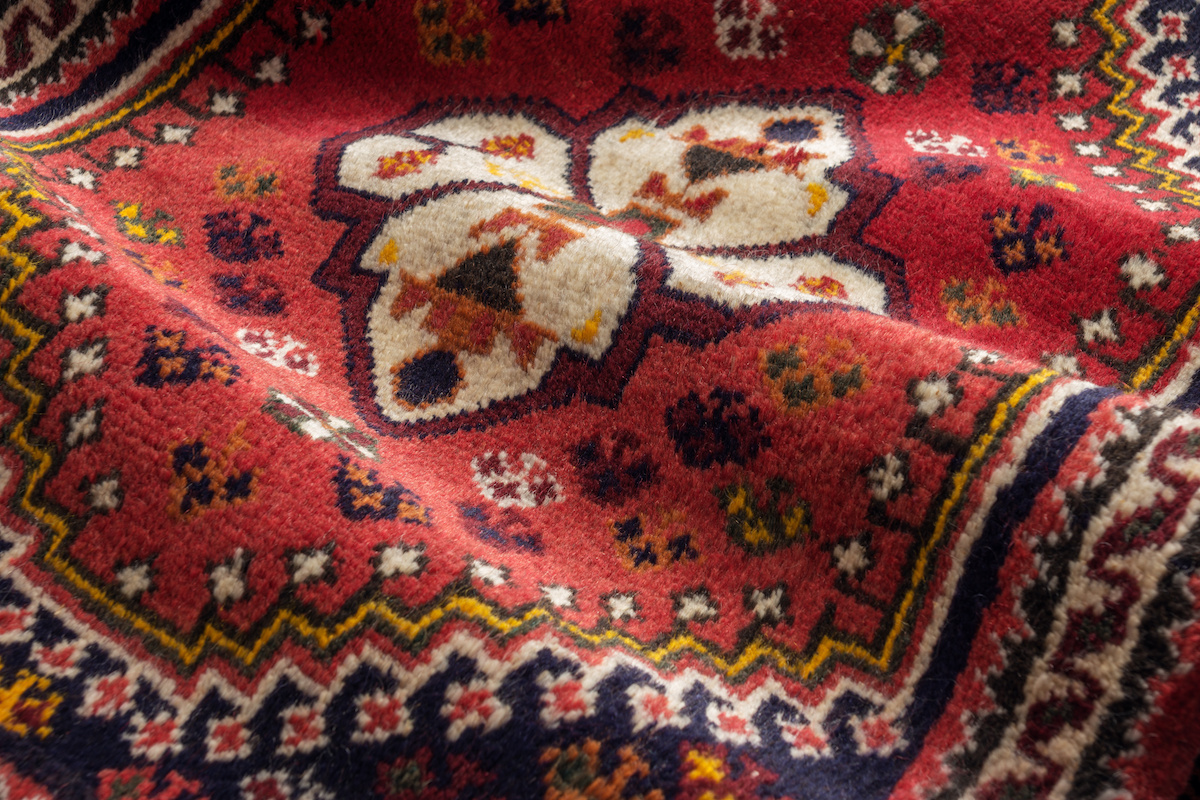If your rug gets wet, the first thing to do is remove it from the affected area and blot up any excess moisture. What To Do If Your Rug Gets Wet, let’s explore
Assessing The Situation
If your rug gets wet, it’s crucial to assess the situation promptly and efficiently in order to prevent further damage and mold growth. Assessing the situation involves determining the source of wetness and evaluating the extent of damage.
Determining The Source Of Wetness
Identifying the source of wetness is the first step in assessing a wet rug. It could be from a leaky roof, burst pipe, or even a spilled drink. Inspect the surrounding area for any visible signs of water and try to pinpoint where the moisture is coming from.
Assessing The Extent Of Damage
After identifying the source of wetness, it’s important to gauge the extent of damage to your rug. This involves visually examining the rug for any discoloration, odor, or mold growth. Also, check the padding and floor beneath the rug for wetness to ensure the damage is not spreading.
Immediate Steps To Take
If your rug gets wet, it’s important to take immediate steps to prevent further damage. Start by removing the rug from the wet area and gently blotting it to remove excess moisture. Then, lay it flat to air dry, making sure to avoid direct sunlight.
Consider using fans or dehumidifiers to speed up the drying process. Remember to address any underlying issues that caused the wetness, such as leaks or spills, to prevent future damage.
Removing The Rug From Moisture
If you’ve discovered that your rug has become wet, it’s crucial to take immediate action to prevent any further damage. The first step is to remove the rug from the source of moisture. Whether it’s a spill, a flood, or excessive humidity, separating the rug from the moisture is essential in minimizing the potential for mold and mildew growth.
Here are some steps to follow when removing the rug from moisture:
- Act quickly to prevent the moisture from seeping deeper into the rug fibers.
- Identify the source of moisture, such as a leaky pipe or a spilled liquid, and make sure to address the issue before returning the rug.
- Wear gloves to protect your hands and carefully lift the wet rug off the floor.
- If the rug is heavy or waterlogged, you may need assistance to avoid strain or accidents.
- Avoid folding or rolling the rug, as it can lead to creases or further damage.
- Once you’ve removed the rug, place it on a clean, dry surface away from the moisture source.
Drying The Rug Properly
After removing the rug from moisture, the next crucial step is to dry it properly to prevent the growth of mold, mildew, and odors. Proper drying techniques will ensure that your rug is restored to its original condition and minimize the risk of further damage.
Consider the following tips when drying your rug:
- Use towels, sponges, or a wet-dry vacuum to remove as much moisture as possible from the rug’s surface.
- Avoid excessive scrubbing or rubbing, as it can damage the rug fibers.
- If the rug is small and machine washable, follow the manufacturer’s instructions for washing and drying.
- For larger rugs or those that cannot be machine washed, lay the rug flat in a well-ventilated area.
- Rotate the rug occasionally to ensure even drying.
- Consider using fans or dehumidifiers to speed up the drying process.
- Avoid direct sunlight, as it can fade the rug’s colors.
- Ensure that the rug is completely dry before returning it to its original location.
By following these immediate steps to remove the rug from moisture and drying it properly, you can effectively mitigate damage and preserve the quality of your rug.
Cleaning And Restoring The Rug
If your rug gets wet, it’s crucial to act fast. Start by blotting the affected area with a clean towel to absorb as much moisture as possible. Avoid rubbing, as it can damage the fibers. Then, air-dry the rug in a well-ventilated space to prevent mold and mildew growth.
Removing Stains And Odors
When it comes to cleaning and restoring a wet rug, one of the primary concerns you may have is how to remove any stubborn stains or lingering odors. Here are a few simple steps you can follow to tackle these issues:
- Blot the affected area: Before attempting any stain removal, gently blot the wet rug with a clean, absorbent cloth or towel to remove as much moisture as possible. Avoid rubbing the rug, as this can spread the stain or push it deeper into the fibers.
- Treat the stains: To address specific stains, you can create a homemade solution by mixing equal parts white vinegar and water. Apply this solution to the stained area and let it sit for a few minutes. Then, using a clean cloth, blot the stain until it fades away. Rinse the area with cold water and blot dry.
- Neutralize odors: To combat any unpleasant odors, sprinkle baking soda generously over the affected area and let it sit for several hours. Baking soda is known for its odor-absorbing properties. Afterward, vacuum the rug thoroughly to remove the baking soda residue.
Reshaping And Flattening The Rug
If your wet rug has lost its shape or become wrinkled, you can restore its original appearance by following these steps:
- Stretch the rug: Lay the wet rug flat on a clean surface and gently pull it in opposite directions to stretch it back into shape. Avoid excessive force to prevent damaging the rug fibers.
- Weigh it down: Place heavy objects, such as books or furniture, along the edges or corners of the rug to help it flatten out. Leave the weights in place until the rug is completely dry.
- Steam or iron: For persistent wrinkles, you can use a handheld steamer or a cool iron on the lowest setting. Hold the steamer or iron approximately one inch above the rug’s surface and move it slowly to help release the wrinkles.
By following these simple steps, you can effectively clean, remove stains, neutralize odors, reshape, and flatten your wet rug, restoring it to its former glory.

Credit: www.greenspringrugcare.com
Professional Help And Advice
Welcome to the section on Professional Help and Advice for wet rugs. When it comes to dealing with a wet rug, there are certain instances when seeking professional assistance becomes necessary. Deciding when to seek professional assistance and consulting rug cleaning experts can make a significant difference in restoring your rug and preventing potential damage.
Deciding When To Seek Professional Assistance
If your rug has been severely soaked due to flooding, sewage backup, or sustained water exposure for an extended period, it’s essential to evaluate the extent of the damage. Professional assistance may be necessary if the rug has an unpleasant odor, visible mold growth, or if the water damage is extensive.
Consulting Rug Cleaning Experts
When deciding on whether to consult rug cleaning experts, consider the type of rug material, the extent of saturation, and the potential for mold growth. Professional rug cleaners have the expertise and equipment required to thoroughly clean and sanitize the rug, ensuring complete moisture removal and proper drying techniques to prevent long-term damage. They can also assess the extent of the damage, providing valuable insights on whether the rug is salvageable or if it requires replacement.
Preventive Measures
Discover preventive measures to take if your rug gets wet. Learn how to protect your rug from water damage and expert tips for drying it effectively. Keep your rug looking fresh and clean with these simple and actionable solutions.
Accidents happen, and sometimes your rug may get wet. Whether it’s due to a spilled drink, a pet’s mishap, or a leaky roof, it’s essential to address the situation promptly to prevent any potential damage. Here are some preventive measures you can take to protect your rug from getting wet in the first place.
Using Rug Pads And Waterproofing Products
One effective way to prevent your rug from getting wet is by using rug pads. Rug pads not only provide extra cushioning and keep your rug in place, but they also act as a barrier against moisture. The padding creates a protective layer that helps to prevent liquid from seeping through and reaching the rug. Rug pads are available in various materials and thicknesses, so be sure to choose one that suits your needs.
Another option is to use waterproofing products designed specifically for rugs. These products create a barrier that repels liquids, preventing them from penetrating the rug fibers. Before applying any waterproofing product, it’s essential to read and follow the manufacturer’s instructions carefully. Additionally, make sure the product is suitable for the type of rug you have to avoid any potential damage.
Taking Precautions During Rainy Seasons
Rainy seasons can pose a particular challenge when it comes to keeping your rug dry. To minimize the risk of your rug getting wet, take some precautions during these periods. Keep windows and doors closed during heavy rain and ensure that your roof is adequately maintained to prevent leaks. If you notice any signs of water damage in your home, such as damp walls or ceilings, address the issue promptly. Regularly inspect the area where your rug is placed to ensure there are no leaks or potential sources of water damage nearby.
Furthermore, consider placing a waterproof mat or tray underneath your rug. These mats are designed to collect any excess water, preventing it from seeping into the rug. It’s important to remember to empty and dry the mat regularly to avoid creating a damp environment that could promote mold growth.
In conclusion, taking preventive measures can significantly reduce the chances of your rug getting wet. By using rug pads or waterproofing products and taking precautions during rainy seasons, you can safeguard your rug from potential damage caused by moisture. Remember that prompt action is crucial if your rug does get wet. How do you fix a wet rug? Act quickly to dry it properly and prevent any further damage.
Frequently Asked Questions For What To Do If Your Rug Gets Wet
What Should I Do If My Rug Gets Wet?
If your rug gets wet, the first step is to blot up as much moisture as possible using a clean towel or absorbent cloth.
Can I Use A Hairdryer To Dry My Wet Rug?
No, using a hairdryer is not recommended as it can damage the fibers of the rug and cause shrinkage. It’s best to let it air dry naturally.
How Can I Prevent Mold Growth On My Wet Rug?
To prevent mold growth on your wet rug, make sure it is completely dry within 24-48 hours. Use fans or open windows to improve air circulation in the room.
What Should I Do If My Rug Starts To Develop An Odor?
If your rug starts to develop an odor, sprinkle baking soda over the affected area, let it sit for a few hours, then vacuum it up to neutralize the smell.
Conclusion
Dealing with a wet rug can be stressful, but taking prompt action can minimize damage. By following the outlined steps, you can effectively remedy the situation and prevent mold and odor. Whether it’s blotting, airing, or using a fan, there are several methods to expedite the drying process.
By being proactive, you can restore your rug to its former glory and maintain its longevity.










